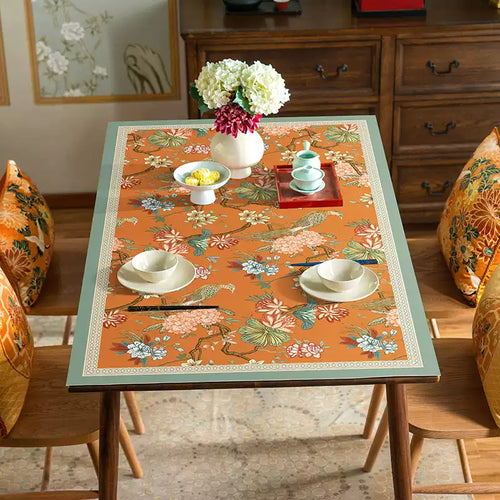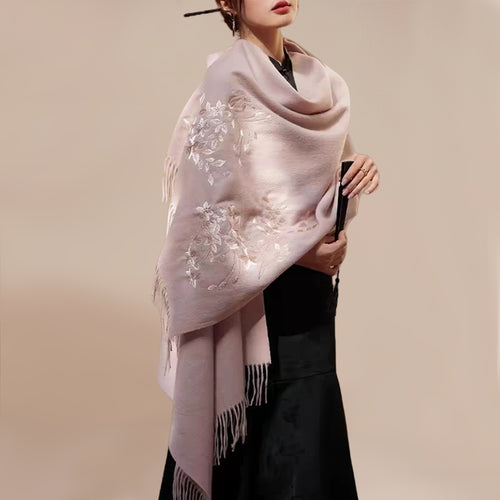The Mamianqun, also known as the horse-face pleated skirt, is a quintessential garment in ancient Chinese attire. It stands as one of the most representative pieces of clothing in ancient China. As Meng Hui describes in "The Slit Skirt," "This type of Song skirt consists of two equal and independent skirt hems. When making the skirt, the two pieces are partially overlapped and then sewn to the waistband."
The Mamianqun, consisting of a horse-face panel and pleats, was a primary skirt style for ancient Chinese women. This traditional garment has a rich history, reflecting the cultural characteristics and aesthetic changes of different historical periods.


Development Over Time

- Song Dynasty: The origins of the Mamianqun can be traced back to the Song Dynasty, where it was initially known as the "whirling skirt." Designed for practical purposes, it allowed women to ride donkeys comfortably, thus named the "split skirt."
- Yuan Dynasty: Early forms of the Mamianqun were found in tombs, indicating that the basic structure of the skirt had been established by this period.
- Ming Dynasty: In the Ming Dynasty, the Mamianqun saw further development and widespread use. The design was characterized by four skirt panels at the front and back, overlapping in pairs, with pleats at the sides. The waistband was often made of white fabric, symbolizing longevity. Ming Dynasty Mamianqun were often decorated with embroidered hems, reflecting the diversity and stylistic richness of the period's clothing.
- Qing Dynasty: The Qing Dynasty brought further evolution to the Mamianqun. The pleats on either side of the "horse face" became more intricate, sometimes reaching up to a hundred pleats, earning the name "hundred pleats skirt." Qing Dynasty Mamianqun were more luxurious and ornate, showcasing the era's distinctive clothing features.
- Republic of China: With the influx of Western democratic and free-thinking ideologies during the Republic of China period, the elaborate traditional Chinese attire was gradually replaced by Western-style clothing. The Mamianqun fell out of common use until recent years, when the revival of traditional Chinese culture, known as the "Guochao" movement, brought the Mamianqun back into the spotlight.



Hotspot Event
In 2022, Dior's fashion show featured a mid-length black skirt described as the "iconic Dior silhouette," which closely resembled the traditional Mamianqun. This sparked a series of controversies worldwide, as it was seen as a blatant act of cultural appropriation. The public outcry led to spontaneous street protests and calls to boycott the brand.

Significance and Legacy
The Mamianqun was the quintessential style for women during the Ming and Qing Dynasties. Its aesthetic journey ranges from the fresh and elegant styles of the Ming Dynasty to the opulent and luxurious designs of the Qing Dynasty, and finally to the refined simplicity of the Republic of China. Throughout these changes, the "horse face" structure remained a constant feature. The name "Mamianqun" is often attributed to its resemblance to ancient defensive structures called "horse faces" (protruding sections of city walls).
Mamianqun come in various colors and are often adorned with auspicious patterns through techniques such as weaving, embroidery, painting, and dyeing. These decorations vividly showcase the exquisite craftsmanship of traditional Chinese embroidery. Today, many beautiful Mamianqun are available on the market, garnering widespread attention and love in modern society. As an ancient ornamental skirt, the Mamianqun's resurgence in contemporary fashion underscores its enduring appeal and cultural significance.


Rooted in traditional Chinese culture, SinoCultural has also embraced the Mamianqun, pairing it with its Chinese Painting Series bags for a stunning photoshoot. This classic combination of traditional elements is a testament to the inheritance and innovation of Chinese culture and craftsmanship.

































